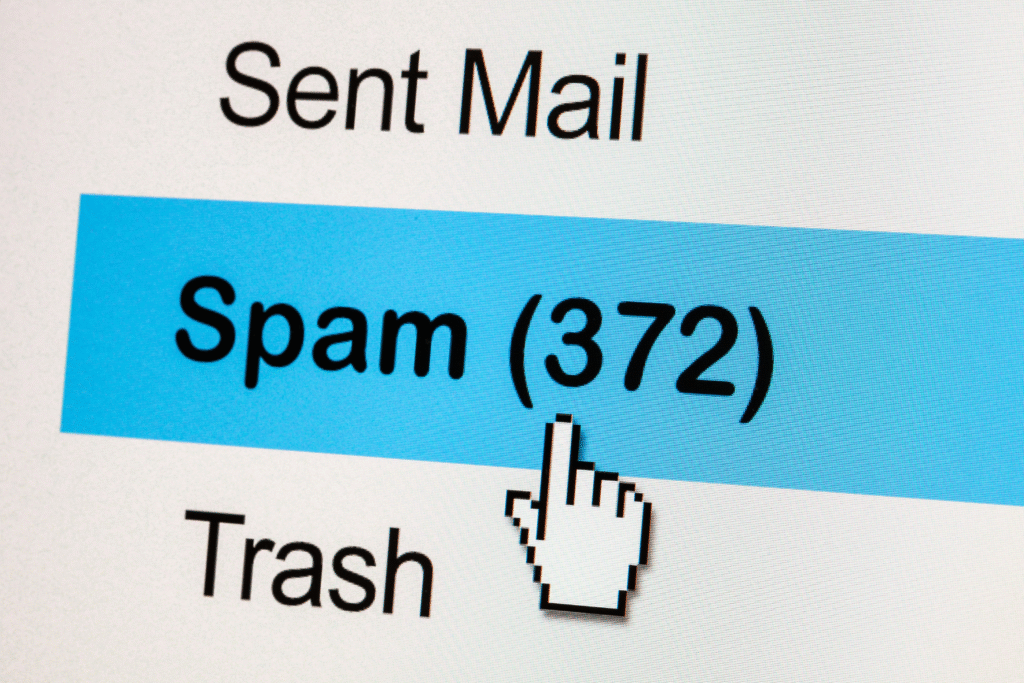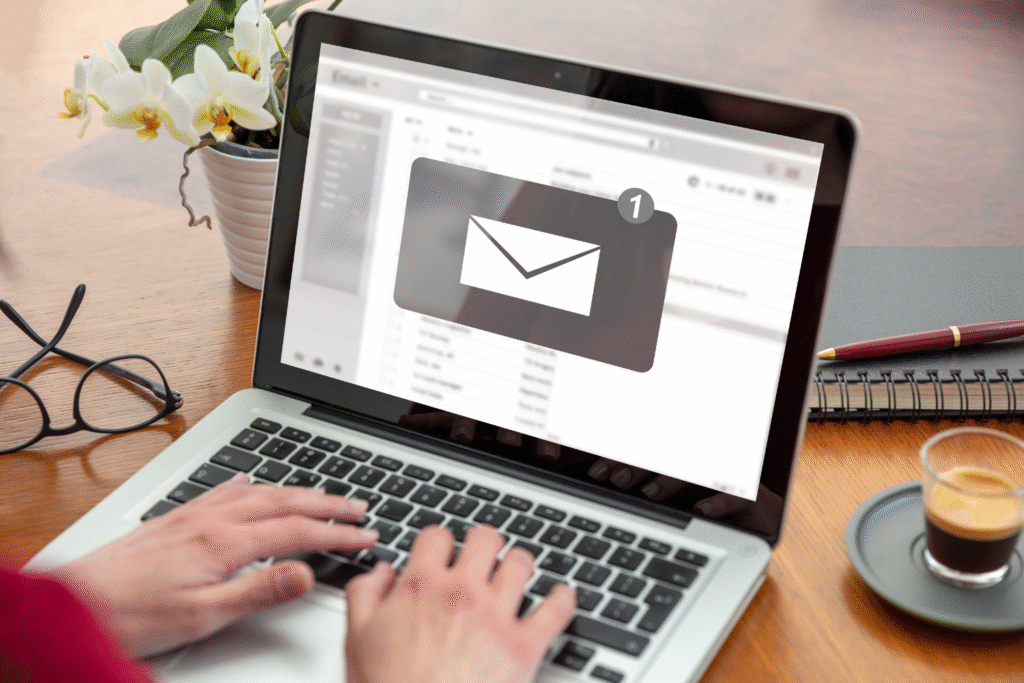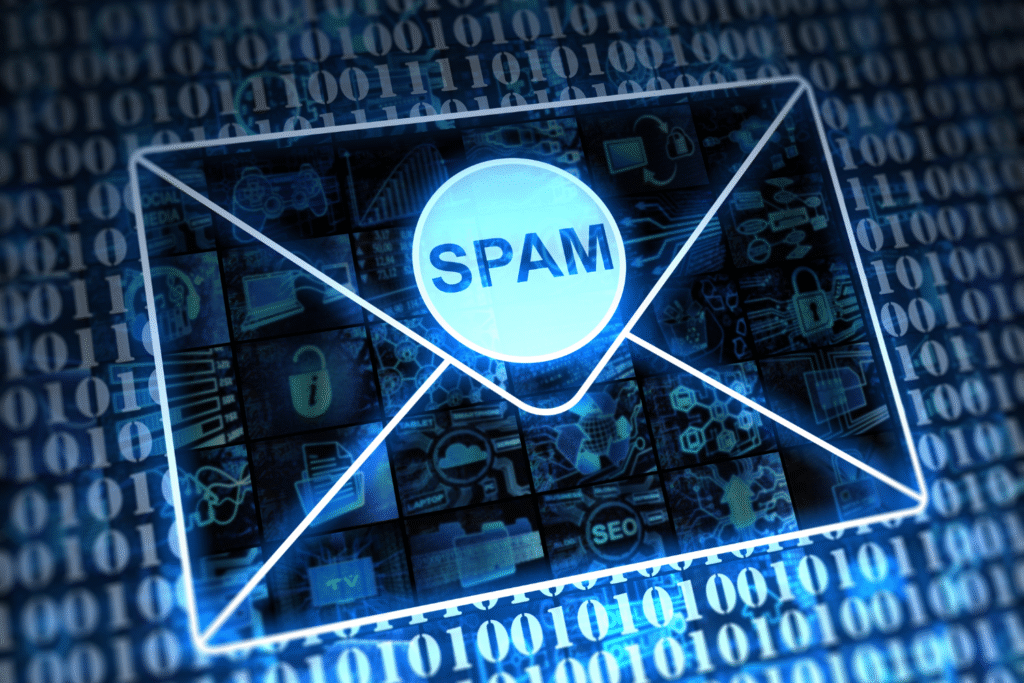You might want to think twice before clearing out that junk folder.

Most people treat their spam folder like digital garbage, deleting everything without a second thought. But what’s hiding in there could be more important—or more revealing—than you realize. Not all spam is malicious, and sometimes, legitimate messages get caught in the crossfire.
Before you hit “empty trash,” it might be worth pausing. The reasons for keeping an eye on your spam folder go far beyond missing a discount email—they touch on privacy, fraud prevention, and even personal security in ways most people never consider.
1. Important emails can end up in spam by mistake.

Email filters are far from perfect, and sometimes legitimate messages wind up in spam. It could be an invoice, a business offer, or even a message from a friend whose email got flagged for no clear reason. Overly aggressive filters often target new domains, automated systems, or anyone who accidentally triggered a keyword the algorithm dislikes.
If you delete spam automatically, you might never see these false positives. Taking a minute to scan your spam folder once a week helps prevent missed opportunities or delayed responses. It’s surprisingly common for important confirmations, newsletters, and even job-related communications to vanish there unnoticed, which can create confusion or lost chances that are difficult to recover.
2. Deleted spam can make it harder to trace phishing attempts.

When you delete spam without checking it, you might also erase evidence of phishing schemes or identity theft attempts. Those suspicious messages can reveal patterns—such as who’s targeting your account, what personal info they’re after, or even when the attacks spike. That information becomes useful if you ever need to report fraud or strengthen your online security.
Security experts often recommend keeping certain phishing emails temporarily for analysis. You don’t have to open them—just note the sender, subject, and domain patterns. Deleting them too quickly can make it harder to understand what’s being targeted or to prove a breach occurred, leaving you less protected in the long run.
3. Your email provider learns from what you mark as spam.

Every time you mark an email as spam or move it back to your inbox, you’re training your provider’s algorithm. It learns what to filter out and what to keep visible, improving your inbox accuracy over time. Deleting spam in bulk, however, skips that valuable feedback process.
By occasionally checking spam before deleting it, you help your provider make smarter filtering decisions. Over time, fewer legitimate messages get trapped in the junk folder, and actual spam becomes easier to catch. It’s a small, mindful habit that gives you a cleaner inbox without cutting off useful communication in the process.
4. Old spam can help identify compromised accounts.

Sometimes, a look through your spam reveals messages addressed to usernames or accounts you don’t recognize. That can be a red flag that one of your email addresses or linked accounts has been compromised. Cybercriminals often use old data leaks to send mass spam, testing which accounts are still active.
If you notice recurring spam referencing old logins or personal info, take it seriously. It could mean your data is circulating on the dark web. Deleting everything hides those warning signs, but keeping track of trends helps you secure vulnerable accounts faster before real damage occurs.
5. Spam headers can expose data breach patterns.

The technical information hidden in spam—like IP addresses and server origins—can reveal where messages are coming from and how often. If you delete them without checking, you lose valuable clues about who’s targeting your address. This data helps you or cybersecurity professionals spot patterns tied to specific breaches or regions.
Keeping a few suspicious messages for comparison can be useful when investigating security issues. Most email systems let you view headers without opening the message, so you can check safely. It’s the digital equivalent of examining footprints before sweeping them away—useful for spotting trouble before it becomes something bigger.
6. You could miss legitimate subscription renewals.

Many subscription services use automated billing or renewal reminders that occasionally land in spam. They often contain links, company logos, or promotional text that triggers filters designed to catch phishing attempts. Deleting everything in your spam folder might mean missing a bill, a payment alert, or a cancellation deadline.
If you’ve ever been hit with an unexpected renewal charge, this could be why. Skimming your spam folder once a week ensures you catch legitimate service messages before they disappear. It’s a simple way to avoid frustration and unwanted expenses, especially when dealing with multiple subscriptions or memberships online.
7. Certain spam messages reveal hacked contact lists.

When you see spam that looks eerily similar to something a friend would send, it’s often a sign their account was compromised. Those messages might contain strange links or attachments but use familiar language. If you delete them right away, you lose the chance to warn your contact before their account spreads more junk—or worse, malware.
Instead of clearing spam blindly, check for names you recognize. Forward suspicious messages to friends through another platform so they can secure their accounts. It’s a small act of digital kindness that helps stop the spread of email-based scams and protects your wider network.
8. Deleted spam makes forensic cleanup harder after hacks.

If your account ever gets hacked, cybersecurity teams often need access to old spam messages to understand what happened. Deleted spam means lost evidence—email trails, timestamps, or sender domains that could help trace the attack’s origin. It’s like sweeping away fingerprints before investigators arrive.
Keeping recent spam for a few weeks offers a safety net in case something suspicious happens later. It’s not about hoarding junk; it’s about having digital breadcrumbs to retrace your steps. Once you’re sure your account’s secure, you can safely delete older messages without losing valuable context.
9. Spam trends can warn you about larger scams.

Spam campaigns often follow global trends. You’ll see fake delivery notices, bogus tax refund offers, or “urgent” crypto investments appear in waves. Checking your spam folder occasionally helps you spot these patterns before they evolve into more sophisticated scams.
Understanding what’s trending gives you an edge—you recognize scams faster when they show up in your inbox later. It also helps you warn others, especially older relatives or less tech-savvy friends who might fall for the same ploys. Treat your spam folder like a weather forecast for digital threats—it shows what’s brewing before the storm hits.
10. Ignoring spam can hide identity theft warnings.

Some identity theft alerts, like bank fraud notifications or unauthorized logins, can accidentally end up in spam because they resemble phishing messages. Deleting everything without checking could mean missing an urgent warning that your financial or personal data was compromised.
Make a habit of scanning subject lines before you empty spam. If something mentions a bank, credit account, or suspicious login, verify it through the official site—not the email link. This small layer of caution can prevent major headaches, especially when digital security alerts get lost among junk offers.
11. Spam deletion habits can affect your email reputation.

Believe it or not, your spam-handling habits can influence how your messages are treated by others’ email systems. When you delete everything without marking real spam or rescuing valid emails, it sends unclear signals to the algorithm that manages your domain’s “trust score.” Over time, your own outgoing emails might start landing in other people’s spam folders.
By interacting with your spam folder thoughtfully, you reinforce better filtering accuracy. It’s one of those subtle digital maintenance tasks—easy to overlook, but quietly impactful for your online communication. A few extra seconds each week can protect your digital reputation in ways most users never realize.
